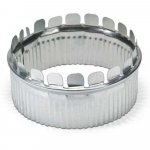dlu
Member
We're installing a Rheem Hybrid (heat pump & electric) hot water heater. The space where the heater goes is very tight and I need to use elbow on the cold air discharge as I come out of the heater. The discharge is 8" and this results in the elbow protruding about a foot from the heater -- I've only got about 10" so it's time to get creative!
The discharge ducting will be short, so I could step down to 6" or even 5" ducting, but I need to make the first turn right at the heater.
So, what I think I need is either a reducing elbow or a very short straight reducer. Does such a beast exist? Google is finding me all sorts of irrelevant suggestions...
The discharge ducting will be short, so I could step down to 6" or even 5" ducting, but I need to make the first turn right at the heater.
So, what I think I need is either a reducing elbow or a very short straight reducer. Does such a beast exist? Google is finding me all sorts of irrelevant suggestions...

